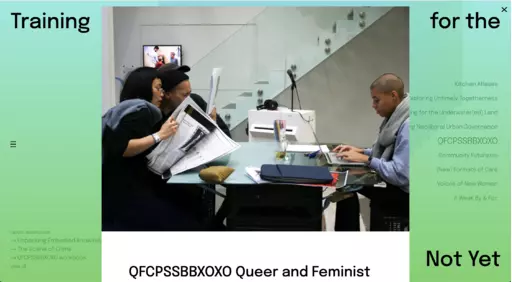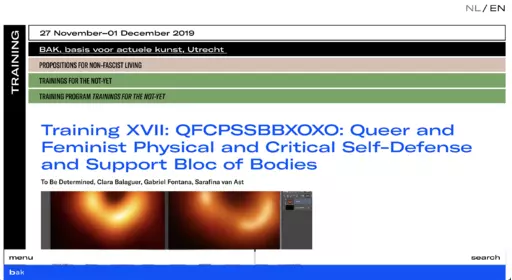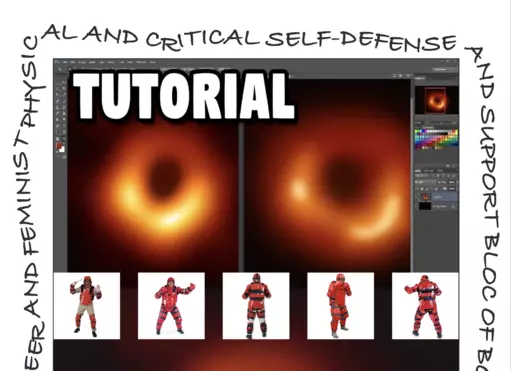
Carmen José
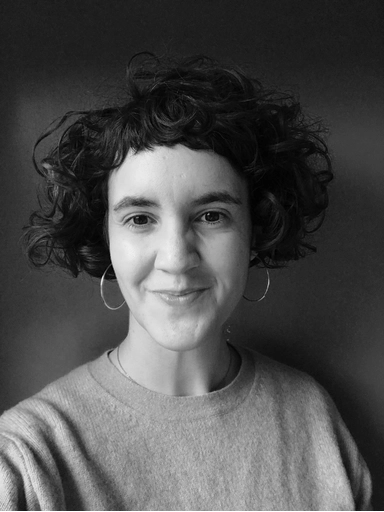
Carmen José
Carmen José is a core tutor on the B.A. Illustration and Social Practice at Willem de Kooning Academy (WdKA) in Rotterdam. In 2021, she was elected to the Institution Works Council (IMR), which is a student and staff representative board authorised to give solicited or unsolicited advice to the management of the institute and to consult on all matters concerning the institute.
Carmen José is a core tutor on the B.A. Illustration and Social Practice at Willem de Kooning Academy (WdKA) in Rotterdam. In 2021, she was elected to the Institution Works Council (IMR), which is a student and staff representative board authorised to give solicited or unsolicited advice to the management of the institute and to consult on all matters concerning the institute.
Codes of conduct are key in the conversations on how staff members facilitate classroom environments towards more inclusive spaces. Much of my facilitation reflection and practice has been gratefully influenced by the work of Clara Balaguer, who was the course leader of Social Practices (one of the three graduation profiles in the WdKA bachelors) when I started working in the department.
Prior to joining the academy, I participated in a workshop led by Clara Balaguer, Gabriel Fontana, and Fyn Paulina Bonita at BAK [Basis for Active Knowledge, Utrecht] in 2019, called ‘Queer and Feminist Physical and Critical Self-Defence and Support Bloc of Bodies.’
While I have been doing workshops in art education since I was 18—first with young people and then afterwards with Documenta14 (in the education team lead by Sepake Angiama and coordinated by Clare Butcher)—WdKA was the first time that I have worked on contract for an institution. Having a contract guaranteed time for me to dive into the institutional structure, which can be extremely hard and take long time to understand because of its unusual and complex course structure.
From my previous experience as student in other institutions I recognise the student body must be part of programme decisions; they are part of the institution and providing for that is something we need to work on. WdKA is organised on ‘hot desking’ with no fixed spaces to departments, apart from the technical workshops like printmaking or ceramics. All the rest of the classroom spaces are booked through an intranet for an institution of around 400 staff members and 2,000 students. Very often, teachers struggle to find the most suitable space on time to schedule. So, actually having regular spaces for students and staff members to come together is a challenge. For a collective participation body to exist in the decision-making processes, an institution needs to offer stable space for students and staff members
Language is an important topic to be discussed. Although WdKA is an international academy and officially everything is in English, many key structural guidelines and curriculum documents are only in Dutch. A lot of informal conversations between students, and between students and staff also happen in Dutch. While this can be useful, if, for example, a Dutch-speaking student is struggling with English, it can unfold in exclusive patterns.
Conversations by the Illustration Research group with the Office for Inclusivity (lead by Alfie Martis and Ali Şahin since January 2021) underlined language in terms of glossaries and terminology because even within English, many people seemed to be using the same words but not understanding them to mean the same thing. Therefore, it has been part of my work in the department to develop a curriculum glossary. That’s been a very important part of the process together with other key points developed in the Inclusivity Advisory Report ‘WE HAVE TO CHANGE’ (March 2022).
One of my approaches as part of the research to decolonising and depatriarchising the curriculum has been assessing the demographics of the reference works and materials that the students are given in the illustration department. It was mainly dominated by fine artists, not illustrators, and was around 90% white male artists from north America and north Europe. This indicates the importance in our collective research of re-defining what contemporary illustration is as there is a lot of confusion among students on how to define yourself as an illustrator when most of the teaching reference consists of a different discipline and a very narrow demographic within that discipline. We are creating a new reference set for the department, especially focused on illustrators active in countries of the Global South. We have been reflecting on the city of Rotterdam and its demographics and how this is reflected in the academy. So, one of the first moves for that was to acknowledge the demographics of the Illustration department, that of the teachers, and of the students.
Although I am in quite a comfortable contracted position for the first time holding a permanent contract after my first year in the academy, I have to take into consideration the personal risk of doing this as a new tutor. There is a lot of conversations to be held, work to be done and it is crucial to find space and time for every staff member to go through self and collective reflection rather than only signalling out previous work as being inadequate or insufficient. The glossary and diversity maps we have worked on have been a good start for this, as it sets up a starting point for tools to be further developed.
The process I developed for writing a collective code of conduct goes in three steps:
What comes out is not just a code of conduct but a list of expectations.
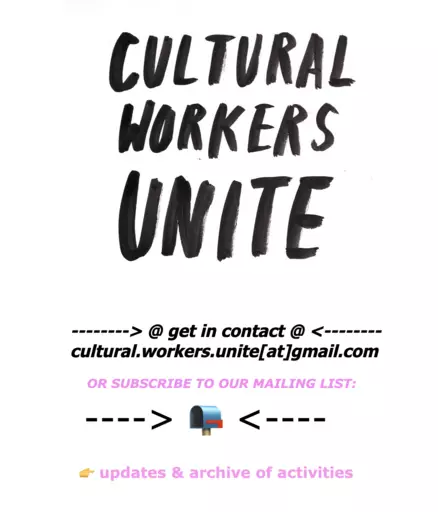
WEBSITE:
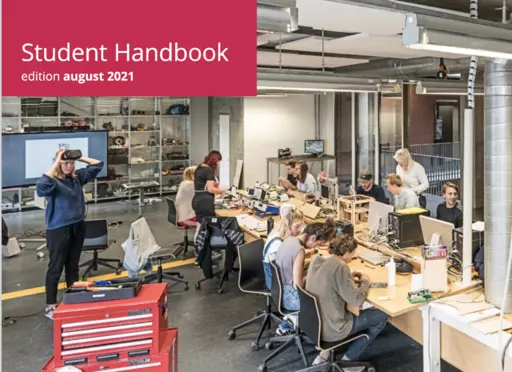
WEBSITE:
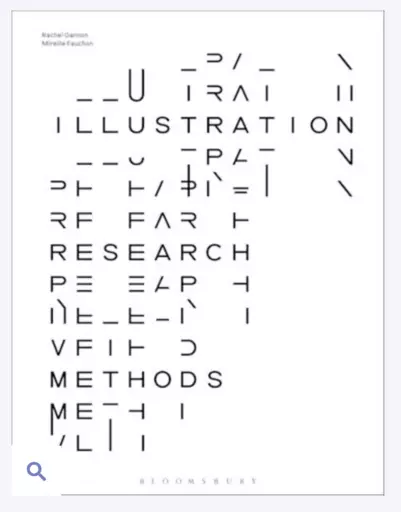
BOOK:
Rachel Gannon and Mireille Fauchon, Illustration research methods (London: Bloomsbury, 2020).
It’s interesting how much comes down to ways of being respectful to each other. I shared this structure and this list of expectations with colleagues and the Illustration research team. And they are rewriting it according to how it works for them and their class as well as reviewing these codes during the semester together with the students.
CJ: The pre-existing code in WdKA doesn’t state who wrote it. It is signed as the Rotterdam University of Applied Sciences, so I guess they are behind the document itself, but it has no publication date. No one seems to know when it was published, and very few people know how to find it in the intranet (Mywdka>Go to mywdka support>Practical>Rules & Regulations>Code of Conduct) and who to contact in case it is not followed.
SA: And are the structures of complaints included in the code itself?
CJ: This is in a separate document but it is there. I have the feeling that 80% of the school doesn’t know that this exists. So, I don’t think it has much meaningful impact. While it states, ‘Staff members and Students refrain from all forms of inappropriate behaviour, particularly sexual intimidation, aggression, violence and discrimination,’ abuses have still happened in the institution which have been difficult to address due to the culture of 'gezelligheid' in the institution, where is hard to talk about certain topics. This was addressed in the Advisory report by the Office for Inclusivity.
It does specify that staff members should ‘avoid contact with individual students in situations or contexts which may give the appearance of sexual intimidation or abuse of power.’ It also states that ‘staff members and students are responsible for reminding each other, where necessary, of the need to refrain from inappropriate behaviour,’ but it does not state what inappropriate behaviour is. So, it’s not defining what constitutes inappropriate or appropriate behaviour.
SA: Does it give guidance on how to report inappropriate conduct?
CJ: There is a further link to the intranet of Hogeschool Rotterdam (Hint), which explains how to file a complaint and the people to contact for this but it also begins with ‘How troublesome that you have a complaint. We hope that there is no need for complaints, but sometimes things go wrong. Let us know when they have, and we will reach a solution together’ with not being very sure who is behind this sentence. Complaint procedures in institutions are very exhausting mentally and physically, therefore it is crucial there are clear visible and accessible plans of action to follow while being able to remain extremely confidential.
Codes of conduct do not work just by writing them, the codes need to be facilitated, regularly reminded and reviewed by the people who they refer to. There seems to be this expectation that if we write things down, that it is enough on its own. But any code or boundary is not going to be of use if there is no collective fluency in it, and if people neither know about it nor take it into consideration.
SA: Have you made the choice to make specific instructions on how to access support or to make complaints?
CJ: At WdKA, we have Study Career Coaching (SCC). As part of the educational programme, each student is assigned with a SCC who support and guides a student throughout their entire period at the academy. Whenever a student needs specific or personal support, they would know to refer to their Student Career Coach. Daniella Hefter, who is the course leader of SCCs since 2022, developed a ‘support and care’ page with complaint and support route for the students with clear visual information, which has been of an amazing addition to the institution structure.
SA: Do you have something like a staff coach? Is there someone with this responsibility for staff?
CJ: No, as staff members we only have a week of on boarding training, then we always refer to our course leaders and managers which is very often confusing as course leaders do not have the capability from the institution of deciding on working condition. This structure leads to very top down and distant (often non-transparent and non-communicative) processes.
SA: Have your working relationships changed as a result of this codification process?
CJ: Definitely. Since we have had conversations about Codes of Conduct, agreeing to disagree with colleagues in front of the students has become a newly important strategy, to demonstrate that the field is varied, we are not all the same, critique and disagreement are not necessarily conflict, and when conflict arises, we need to hold collective space for the conversations it unfolds as a learning opportunity for everybody.
